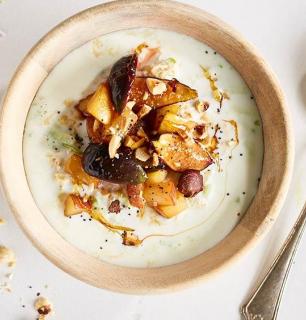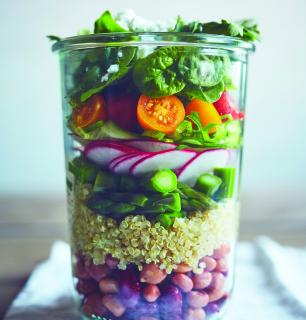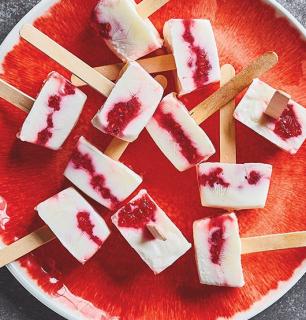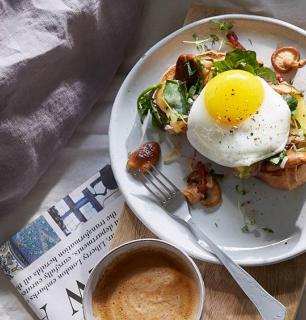Love bites
You can always get them store-bought in a box, but making your own croutons gives you the taste of freedom – to spice them up, slather them in butter or garlic, or top them with double or even triple melted cheese. You can choose artisanal bread or whole wheat – whatever you fancy! Every bite will add a spark to your plate.
Homemade croutons? There’s nothing to it, right? Until you start trying to carve fresh bread into neat little cubes. Not so easy after all: the bread is light and spongy, and the cubes come out crooked and squashed, almost all crust. Can you really fail at making croutons? Yup.
First, choose a dense bread, or day-old or even two-day-old bread, which will have a fighting chance against a serrated knife.
What then? Toss them in the pan? Grill them in the oven? Either is fine, really, though experience has taught us to brown them in butter if you’re going to pan-fry them; if they’re in the oven, drizzle the bread cubes with oil.
For pan-fried croutons, butter the bread generously, or mix sufficient oil and butter to lightly coat the bread before frying. Without fat, croutons will be toast, literally. Some breads are so toothsome that they can handle that. It’s a matter of taste.
A common misstep is trying to fry too many croutons at once. There should be enough bread cubes to cover just the bottom of the pan and no more. Only one storey of croutons, not two; not even one and a half. And be sure to keep the heat at medium. Too hot, and the croutons will crisp rapidly on the outside while the crumb remains moist. As well, cooking over medium heat will allow you to prepare croutons with garlic and spices without burning them.
Croutons can also be made in the oven: in a bowl, simply drizzle the bread cubes with olive oil, season, sprinkle with herbs or spices (parsley, chili powder, oregano, Parmesan cheese, and so on). Toss to thoroughly coat each little piece of bread, spread in a single layer on a baking sheet, and you’re ready to go. But keep a close eye on them! At 400°F (200°C), 15 minutes is usually enough for golden-brown, perfectly crunchy croutons. Even a little longer and your croutons will only be fit for the compost bin. Unlike the frying pan, the oven can char the bread without you noticing.
Try simple and classic flavour combinations. We love shallots, garlic and thyme, or Parmesan cheese and smoked paprika. A touch of truffle oil is another yummy option, perhaps to accompany a fresh salad or a steaming bowl of soup. Or be bold and trade in your slices of baguette for brioche, milk bread or a multigrain loaf.
One last piece of advice: in no case should you taste-test while waiting for your guests to arrive. If you pluck even a single crouton off the sheet to drop it in your mouth, you can be sure another will soon follow, and another!
Finally, you can well imagine that this is a great way to share the kitchen with your junior chefs.
Our recipes
See all recipes




